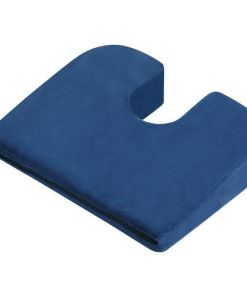The Stax splint is simple and effective – it partially-encloses the end of the finger in a rigid, plastic shell to keep it straight in a good healing position and protect it from further damage. There are ventilation holes in the cover to keep it breathable and help prevent skin decaying.
Mallet finger
The term mallet finger has long been used to describe the deformity produced by disruption of the terminal extensor mechanism at the tip of the finger.
Any force acting on the finger while it is held in an extended position risks the integrity of the extensor mechanism at the distal interphalangeal (DIP) joint/tip. This causes swelling, tenderness, pain in the area where injury has taken place.
Splinting
Splinting of the distal interphalangeal (DIP) joint in full extension allows healing of the injured structure and restoration for excellent function and appearance.
Types
- Aluminium foam splint- Dorsal splinting is more effective. It needs two tapes for keeping good contact with the finger which is injured
- Thermoplastic splints
- Stack splints – Stack splints are widely used for the treatment of mallet finger.
Features of Stax mallet
- Perforated, translucent, semi-hard plastic.
- It provides a neutral position to the DIP joint
- It protects the finger from further deformities
- Easily taped in place
- The material has no effects on the skin even after a long duration of use
Size of the Stax Mallet Splint
The splint is going to give the finger a reliable support. Therefore it is important to get a perfect size for your finger. For this, the circumference of a distal interphalangeal joint is been measured
The correct size according to the circumference can be chosen with the help of the table given below
| DIP joint circumference | Mallet Stax splint size |
| 4.5 | Size 1 |
| 5 | Size 2 |
| 5.5 | Size 3 |
| 6 | Size 4 |
| 7 | Size 5 |
| 7.5 | Size 5.5 |
| 8 | Size 6 |










Reviews
There are no reviews yet.